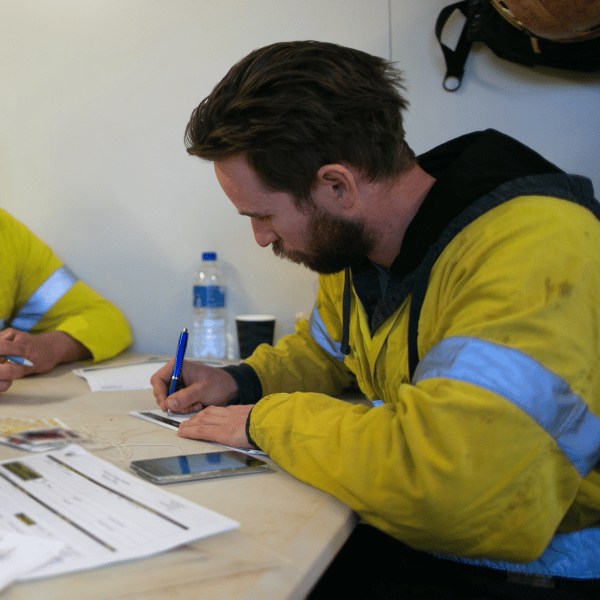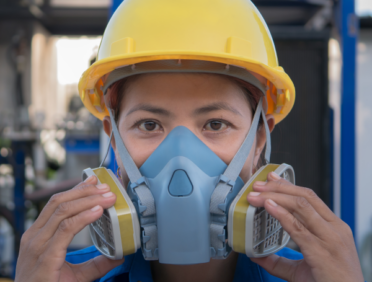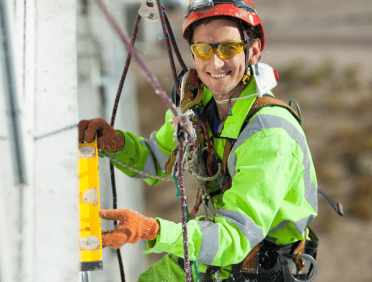The risk assessment is a primary management system which has been designed for the purpose of ensuring the health and safety of people in the workplace. However, what many people do not know is that when it comes to health and safety, it is actually a legal requirement for employers, as well as certain types of self-employed people.
If you are unsure about how to complete a risk assessment, or you do not understand their relevance within your specific industry, you need to gain knowledge of risk assessments and management. We’ll be covering some of the important details here.
What is a Risk Assessment?
The definition of a risk assessment is as follows:
The systematic process of not only identifying hazards within a workplace, but also evaluating the risks that accompany such hazards within the workplace. Furthermore, a risk assessment involves implementing a reasonable level of control and preventative measures to reduce or remove these risks.
With regards to a risk assessment, it is necessary to define certain keywords which will occur in any assessment.
- An accident is considered to be any unplanned event that results in a loss of some kind.
- A hazard is considered to be something which has the potential to cause harm.
- A risk is considered to be both the likelihood and severity of a negative outcome of a hazard – injury, damage and loss are frequent examples.
If your business or employer needs to reassess or complete risk management protocol, then it may be necessary to seek out additional training. We provide such necessary training to teach staff the skills needed.
A risk assessment is a legal responsibility. Therefore, it is necessary to make sure that you fulfill it as best you can.
There are different types of risk assessment which are required in the workplace. These risk assessments need to be proportionate to the activities which take place in the work environment.
Within many specific industries, there are many legislative requirements which apply for risk assessments. There are many environments, for example, where hazardous substances are used. In this situation, it would be necessary to complete a Control of Substances Hazardous to Health Assessment (COSHH).
Some of the common types of risk assessments include the following:
Fire risk assessments are part of fire safety management procedures, which are a necessary part of all workplaces. Every working environment needs a suitable fire risk assessment.
Manual handling risk assessments should be conducted in any workplace environment where an employee might be put at risk from either injury or ill health through the responsibility of lifting, moving and carrying heavy loads.
Display screen assessment risk assessments are required for any workplace where the employees are frequently using laptops and computers.
Finally, the COSHH risk assessment is required for situations where hazardous substances are either manufactured, used or stored on the premises.
It’s probably worth noting that some businesses also may choose to complete a risk assessment method statement, which is dependent upon the nature of the operations being carried out. The process is used to contain details of the specific hazard, as well as a step-by-step procedure on what to do for controlling the risks that have been already identified. As a process, you typically find this within the construction industry.
Why Are Risk Assessments Important?
As has been previously stated, it is important to carry out risk assessments in the workplace, as they are the primary management tool required for protecting staff. As the risk assessment is a legal requirement for any employer, it has to be documented in any situation where more than five people are employed in a workplace at any given point.
Risk assessments are generally considered to be both a structured and straightforward method of making sure that the risks to the health and safety of employees and any other relevant parties are suitably controlled or eliminated outright.
The primary purpose of a risk assessment is to identify safety and health hazards, as well as evaluate the risks presented within the workplace, to provide an evaluation of the suitability and effectiveness of existing measures designed for controlling risk, and to make sure that additional controls are implemented in any situation where the remaining risk is considered to be anything besides low.
Other important aims of a risk assessment include being able to prioritise more resources for guaranteeing the control and safety of others. If a business does not have the necessary measures in place to control health and safety risks, than it can be very costly. Not only can there be severe financial loss through lawsuits and civil actions, but there is also the risk of loss with regards to production time, damage to vital equipment, and negative publicity, not to mention the time required to train replacement staff if existing staff are injured and unable to work.
A well-documented case references a situation where a business was fined £274,000 after two workers became trapped within moving machinery in separate incidents. The situation served to highlight that health and safety executive inspectors would be more than willing to take proper action against any business that doesn’t meet the required standards for health and safety in the workplace. incidents like this really serve to highlight the vital nature of risk assessments.
Within the workplace, it is the responsibility of the employer to carry out risk assessments in order to locate and identify hazards, or to appoint somebody who has the relevant experience, knowledge, and skill set to conduct a risk assessment on their behalf.
According to the Management of Health and Safety at Work regulations 1999, an employer has to take certain steps ‘for the effective planning, organisation, control, monitoring and review of the preventive and protective measures.’
Therefore, the regulations clearly states that even if the task of risk management is assigned to another employee who has the relevant experience, it still remains the responsibility of the management/employer to guarantee that the risk assessment has been completed to a suitable standard to help protect workers.
Once all of the hazards have been clearly identified, as well as all risks evaluated and steps have been taken to minimise the potential damage, the next step on the part of the employer is to not only effectively but clearly communicate the risk assessment process to the relevant parties in order to promote widespread knowledge.
One of the first effective methods of communication is to make sure that the relevant parties are involved with the risk assessment process at every stage of its creation and conception. The person who is carrying out the activity or the task is often in the best position to be able to provide proper details regarding the associated risks and hazards of the activity, and thus should be participating in the completion of the risk assessment.
The 1999 regulations are considered to be an extension of the original Health and Safety at Work act which was created in 1974. The act demonstrates and lays out the general duties that employers have towards both members of the public and staff. It also demonstrates the responsibility that employees have to both themselves and each other.
The duties which are quantified within the act by the principal idea to be implemented so far as is reasonably practicable within that workplace. Therefore, in other words, an employer is not responsible for taking any measures if they are technically impossible, or if the cost of the measures would be disproportionate to the risk involved. You don’t have to make changes if the changes you would have to make are considered to be too costly for the situation.
However, with that being said what the law does require is that both common sense and good management are demonstrated when handling risks. Therefore, employers have an obligation to examine the rest, and then to take practical measures for the sake of dealing with them.
The introduction of the 1999 regulations simply served as a way of clarifying many of the regulations that were already in place, and made much more explicit instructions to what employers were expected to do in order to help manage health and safety in the workplace.
The basic requirement of every employer is to carry out a proper risk assessment. Employers who have more than five employees in the workplace have to record any significant findings of the risk assessment and document them properly.
Any risk assessment which is carried out should be straightforward enough that it is recognisable in both a simple office and the typical industrial workspace. Risk assessment only needs to be a complicated document if it deals with any hazards considered to be serious, such as a chemical plant, oil rig, laboratory or nuclear power station.
In addition to completing a proper risk assessment, employers also have other responsibilities. They are required to make proper arrangements to implement the different health and safety measures that were identified as being necessary during the risk assessment. They are also required to appoint and work with competent individuals, typically themselves or trusted colleagues, who can help them to implement the different arrangements that have come about as a result of doing a risk assessment.
Employers are also expected to set up to guarantee safety for workers. They need to make sure that there is both clear information and adequate training provided to employees regarding health and safety. Finally, they have to work together with any other employer who is sharing the space with them to make sure that health and safety regulations are consistent across each team.
Effective Risk Profiling
Effective risk profiling is all about the responsibilities that leaders have to take in order to make sure that they can properly identify the different risks within the workplace.
This means that you are responsible for identifying who takes ownership of the different health and safety risks that are found. You also have a responsibility to consider the worst case scenario when it comes to health and safety risks for your organisation. As a result of doing this, you need to evaluate how effective your plans would be in controlling the problems that you might face.
You should make sure that all risk assessments are carried out by a proper, trained expert. You also need to make sure that you maintain a proper overview of the risk profiling process, regardless of who is doing it.
How to Identify the Risks
Identifying the different risks which are around the workplace that could violate health and safety codes involves taking the time to put into practice some simple steps.
Many risks can be identified by simply observing your workplace. If you walk around the workplace and look at the different activities that are taking place, what do you notice that could be harmful to your employees?
You can also gain a lot of information by examining previous accident records as they may contain indicators of less obvious health and safety hazards. Examining the data sheets from manufacturers is also a good idea, as this may contain vital information.
Finally, a good way to identify risks is to speak to the employees who work with the different machinery or carry out the tasks that are being evaluated, as they will have firsthand knowledge of what could be dangerous.
Evaluating the Risks
Evaluating the risks should be done by examining each risk objectively and identifying the scale of potential damage which could occur. For example, if a machine uses sharp blades for cutting purposes, there is a risk of bodily harm should that blade malfunction.
Who Might Be Harmed?
When exploring risk assessments, a core part of the process is identifying who might be harmed as a result of the health and safety risk in question. This is generally one of two groups – employees or other parties like the general public and logistical support ie. delivery drivers.
Health and Safety Control Measures
Health and Safety control measures include any and all actions which are taken to reduce the potential of exposure by employees to the hazard in question. It can also refer to the measures that are taken which help to remove the likelihood of the exposure risk.
For example, putting protective barriers in place to prevent staff from exposure to sharp cutting blades is a control method to reduce the risk of that hazard.
How to Carry Out a Risk Assessment
The HSE has created and recommends a five-step process for anyone who is completing a risk assessment within the workplace. This process helps to make sure that the assessment is completed to a suitably comprehensive level.
The process involves identifying any potential hazards that may occur, and then identifying anybody who might be at risk of harm from those hazards. After that, it is important to evaluate the risk to each group and then to develop suitable precautions.
The fourth part of the process is implementing the control measures necessary and recording the findings of these new measures, and then the fifth part of a risk assessment is reviewing the assessment and assessing again if necessary.
When to Carry Out a Risk Assessment
A proper risk assessment needs to be carried out when it comes to a specific activity or task, in order to help control the risks to health and well-being.
Once the risk assessment has been completed, it should be periodically reviewed to make sure that it is still an effective way of mitigating the current risks.
A relevant risk assessment should always be reviewed where necessary following any incident where a worker is injured.
Record Your Findings
If the company contains more than five employees, a risk assessment should always be completed, and then documented properly. Not only does this guarantee compliance with legal procedure, but it also forms the backbone of any legal challenge where due diligence may be necessary.
Regularly Review Your Risk Assessment
Risk assessments should be regularly reviewed to make sure that they are still compliant and effective for protecting staff within the workplace. In the event of an accident or injury within the workplace, the risk assessment needs to be legally reviewed to make sure that the current control measures in place are enough to protect workers.
Reporting Risks
In the event that new risks are identified by a member of your workforce, they should feel like they are in a position to report this to you. Furthermore, it is necessary to make sure that any new risks are added to the risk assessment and new measures implemented as necessary.
Online Training
When it comes to online training, Learn Q is more than capable of supplying full and comprehensive risk assessment training. We can help provide an employer or designated staff member with the necessary experience, relevance and tools to successfully conduct a risk assessment and implement control measures to protect workers from harm.
To download a .pdf of this blog, please click here












